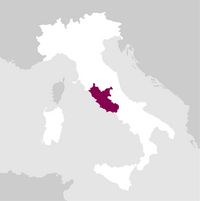Description
Still white wine from Lazio IGT, 14% ABV, produced by Casale del Giglio. 100% Bellone blend. 0.75 L bottle, 2024 vintage. A sunny wine made just outside Anzio from an old ungrafted vineyard, where, thanks to the nature of the soil, phylloxera has not been able to spread. Harvest takes place at the end of September. The vinification takes place in two phases: maceration on the skins to facilitate the extraction of aromas, thus restoring the soil and climate characteristics of the Anzio area. After soft pressing, spontaneous fermentation with indigenous yeasts follows, which lasts approximately 10-12 days at a temperature of 18-20°C. Intense yellow with golden reflections. On the palate it is very broad, rich, and persistent, with light floral and spicy nuances. It is distinguished by its pronounced savory and minerality. Very long and persistent aftertaste.
Awards
Details

Perfume

Color

Taste
Serve at:
12 - 14 °C.
Longevity:
03 - 05 years

Pairings
- Start up year: 1967
- Oenologist: Paolo Tiefenthaler
- Bottles produced: 1.700.000
- Hectares: 164
still working together on this initiative Professor Attilio Scienza, the Institute of Arboreal Cultivation, University of Milan, Prof. Angelo Costacurta, Experimental Institute for Viticulture in Conegliano (Treviso) and Prof. Fulvio Mattivi of Edmund Foundation Mach - Research and Innovation Centre of the Istituto Agrario San Michele Provincial (Trento), from which the oenologist, Paolo Tiefenthaler. The wine cultivation models that have inspired this research are those practiced in Bordeaux, Australia and California, which are territories exposed to the influence of the coast, exactly as the Pontine Marshes, which benefits from the influence of the Tyrrhenian Sea. Read more


| Name | Casale del Giglio Anthium Bellone 2024 |
|---|---|
| Type | White green still |
| Denomination | Lazio IGT |
| Vintage | 2024 |
| Size | 0,75 l |
| Alcohol content | 14.0% by volume |
| Grape varieties | 100% Bellone |
| Country | Italy |
| Region | Lazio |
| Vendor | Casale del Giglio |
| Story | The Bellone vine has good vigour and withstands dry periods well, guaranteeing quality and balance. The bunches are cone-shaped-cylindrical and the grapes are spheroidal with a very thick, golden yellow skin. Constant sea breezes help it reach full ripeness, where excellent sugar concentration and high acidity contribute to its strong minerality. |
| Origin | Anzio |
| Climate | The age of the vines of over 60 years, the direct influence of the sea, the marine soils, mean that this small area is unique for the production of Bellone. One can speak of a specific Terroir, or rather of a perfect symbiosis between vine - soil - climate - tradition, the true cornerstones for the production of a great wine. |
| Soil composition | Born behind Anzio from an old vineyard free of foot (vines without rootstock) where, thanks to the nature of the soil, phylloxera was unable to spread. |
| Harvest | ing takes place at the end of September. |
| Wine making | Vinification is carried out in two phases: maceration on the skins to favour the extraction of aromas, thus restoring the pedoclimatic characteristics of the Anzio area. After soft pressing, spontaneous fermentation with indigenous yeasts follows, which lasts for about 10/12 days at a temperature of 18/20 °C. |
| Allergens | Contains sulphites |





